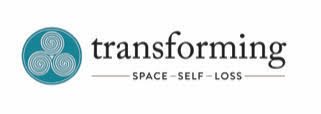
Feng Shui
Some homes feel good. The minute you walk in the door, you feel better. More relaxed, happier. There is a sense of harmony. Feng Shui, an ancient system based on the Chinese Five Element theory, is a tool you can use to create harmony in your space.
Why are there different schools of Feng Shui?
There are two main kinds of Feng Shui, the Form School and the Compass School. The Form School is the oldest and most commonly known and practiced in China; its name comes from the study of forms.In northern China, which bordered on the Gobi desert, direction became very important (if your doorway faced the desert, blowing sand was a problem) and the Compass School of Feng Shui developed.
So, according to the Compass School, a north-facing entrance is inauspicious. Certain numbers, colors, and flowers are considered unlucky. Many westerners consider Compass School Feng Shui superstitious. Although the Form School is the most commonly practiced in China, in the US there are more Compass Schools, so there are many Feng Shui consultants who might tell you to change your street address or move to a house that faces a luckier direction.
What kind of Feng Shui works best?
I do what I call instinctive Feng Shui. I teach my students and clients to use the common-sense life-space design principles that Form School Feng Shui is based on, so that they can partner with their space.
IMHO, Feng Shui shouldn’t just be a one-time event that you pay someone else to do for you. Feng Shui should be an on-going partnering process. I teach my students and clients how to update their Feng Shui as their life evolves.
I do not advise clients to hang bamboo flutes from red cords or anything else that would be out of place in their homes. The goal is not to make your home look Chinese; the goal of instinctive Feng Shui is to create the kind of order and beauty that inspires you!
I work with each client to find items that will anchor their own intentions for transformation. I do not use words like ‘cure’ when referring to items that can bring balance and harmony into your space.
Feng Shui is not magic! It’s an empowering way of
partnering with your space.

The Feng Shui Bagua
What is the Bagua?
Just as we have an energy grid over our physical body (acupuncturists call it the meridian system), the Feng Shui Bagua is an energy grid, or template, for your home. Like the reflexology chart that provides us with a map to see which areas of the foot are connected to which areas of the body, each area of your home has a particular quality. The Chinese depict the Bagua as an octagon; it is shown here as a square.
How do I use the Bagua?
Align the Bagua with the front entrance to your home at the bottom of the page (your front door will either be in Wisdom, Career, or Helpful Friends). The Bagua can be elongated or widened to fit the dimensions of your home. Draw your floor plan over this Bagua to determine the inherent energy of the areas in your home. Then choose one or two areas of your life which need an increased flow of abundance, and make changes in that part of your home!
I’d like help applying Feng Shui principles to my home and work space!
Consider hiring a Feng Shui practitioner to do an assessment of your home and/or work space. Rates range from $50 to $300 an hour, depending on your area and the experience of the consultant. I charge $150 an hour, and I’d love to work with you to make sure your home is as harmonious as possible, and able to function as your success partner.

